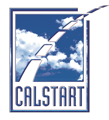Driving toward zero-emission commercial vehicles
By Cristiano Façanha, Global Director of CALSTART’s Global Commercial Vehicle Drive to Zero program
Recognizing the disproportionate impact of commercial vehicles on urban air quality and climate emissions, nations and cities are increasingly considering a range of policy options to encourage zero-emission (ZE) technologies for buses, trucks and other commercial vehicles. Those include not only sticks – such as low- and zero-emission zones, traffic access restrictions, congestion pricing, and regulations – but also carrots like financial incentives and infrastructure investments.
This combination of carrots and sticks is what we refer to as “eco-systems” of change, composed on policies, financial incentives, infrastructure investments, and pilot projects that together can create the right market conditions for such ZE technologies to flourish. China, California, and the Netherlands are charging ahead with such policies to enable and accelerate the uptake of ZE commercial vehicles. Because the market is still in its early stages, the limited supply of vehicles will be first deployed in those regions with the strongest eco-systems.
Policymakers drafting these critical climate and air quality policies now rely on various sources – individual experts, manufacturers, nonprofit organizations, peer-reviewed studies, news reports and any other number of resources – to determine what is most effective when it comes to regulations, policies, and incentives.
In fulfillment of our commitment to drive strong policies that catalyze the growth of ZE commercial vehicles, CALSTART’s Global Commercial Vehicle Drive to Zero program (Drive to Zero) is working to close information gaps for policymakers, as well as ZE commercial vehicle adopters, manufacturers, and investors. As part of this effort, we are launching an online publicly available tool, the Zero-Emission Technology Inventory (ZETI), aimed at cataloging models of current and upcoming zero-emission commercial trucks, buses and off-road equipment. A first-of-its-kind platform, ZETI creates a foundation for better understanding this developing technology segment.
In addition to global vehicle availability information, ZETI provides users with granular data for current and known future offerings including weight/class, estimated payload/passenger capacity, driving range, and energy storage capacity. A timeline feature offers users a sneak peek at new model availability data indicating where and when new models will debut on a commercial scale.
We consider ZETI a foundational platform that will eventually provide a holistic picture of the ZE commercial vehicle sector so global fleets can grow smarter, investors can get a clearer picture and policymakers can draft incentives or rules around technologies that are already out there, or that are coming soon.
Industry leaders like IKEA’s Ingka Group, BYD, Nikola, Siemens, The Lion Electric Co., New Flyer Industries, Southern California Edison, Ryder, Proterra and governments like the nation of Canada, the cities of Los Angeles, Vancouver, Madison, and Sacramento have all signed the Drive to Zero pledge, agreeing to work collaboratively to achieve Drive to Zero’s goals. A full list of Drive to Zero pledge signatories can be found here.
We hope that ZETI can help collectively grow our understanding of the current and coming ZE commercial sector in the coming years. Trucks, buses and other commercial vehicles are becoming cleaner and more technologically advanced day-by-day and continent-by-continent. By coordinating our activities and sharing information, we can drive to zero cost-effectively, sustainably and more swiftly.
Cristiano Façanha, Ph.D., is the Global Director of CALSTART, leading its Global Commercial Vehicle Drive to Zero program. Dr. Façanha is a noted clean bus and truck and policy expert, coalition builder, and a civil and environmental engineer.
